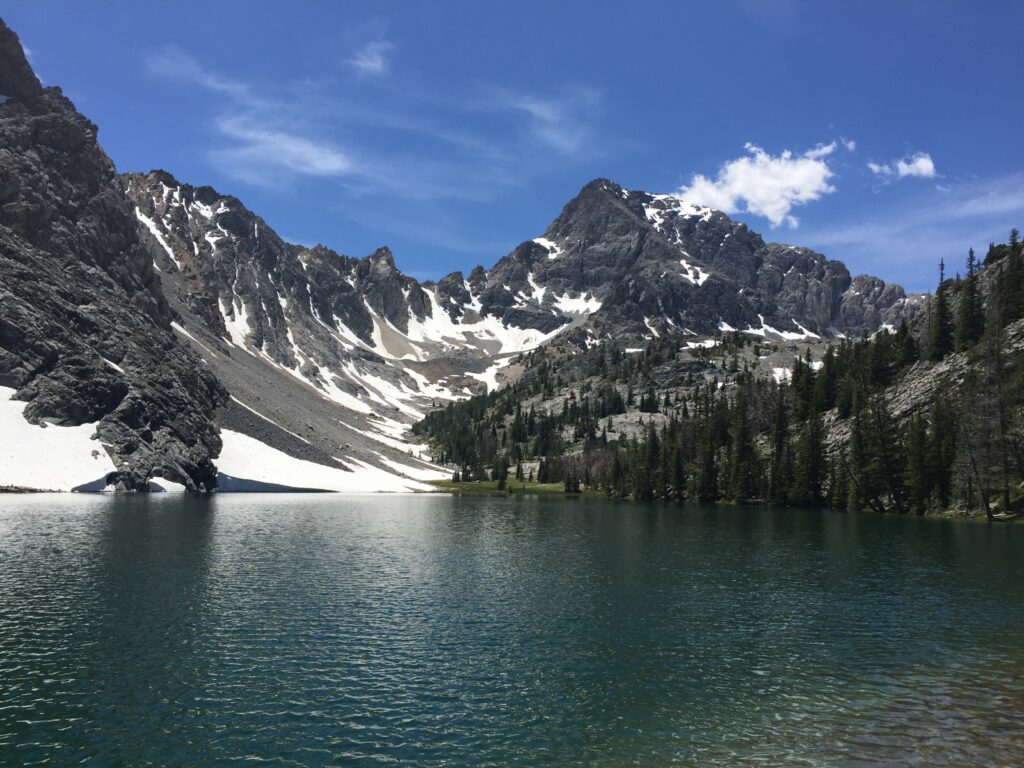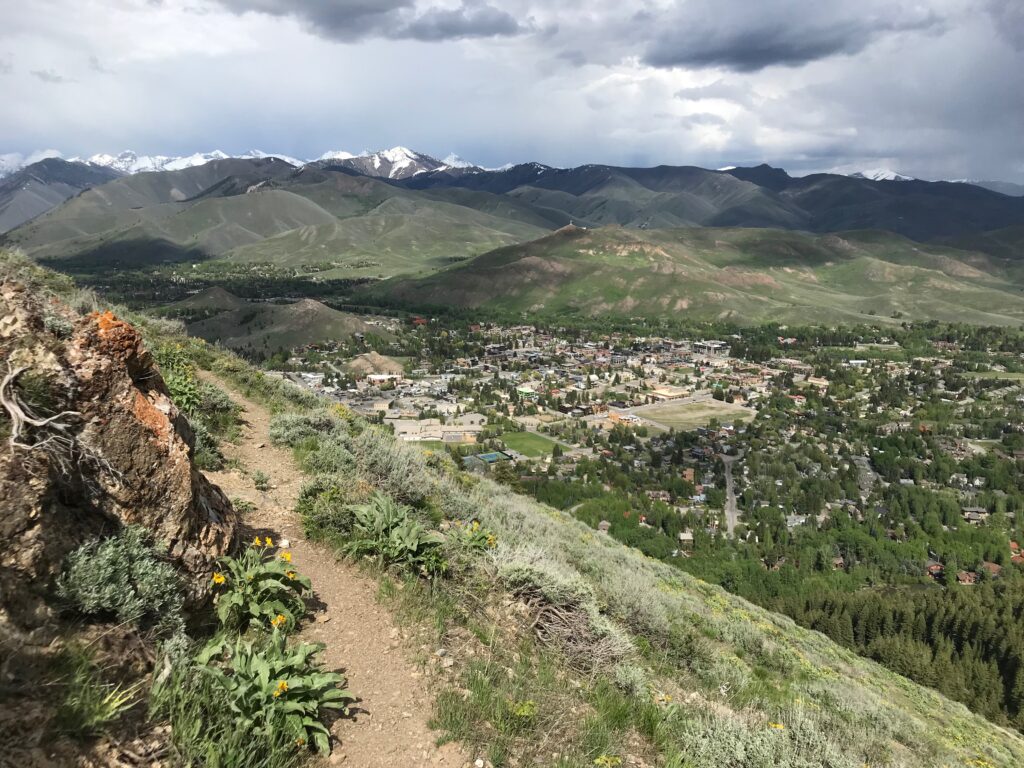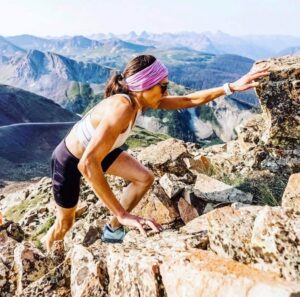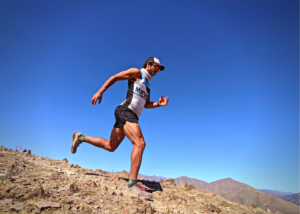
THREE WAYS TO IMPROVE PERFORMANCE WITHOUT RUNNING
THREE WAYS TO IMPROVE PERFORMANCE WITHOUT RUNNING By Kristina Pattison, DPT, OCS, CSCS Maddie Small, Alpine South physical therapist and runner. We all know, deep

Have you ever gone for a run or signed up for a race and found yourself completely out of your element, because the terrain is vastly different from your typical training grounds? Technical terrain carries so many different meanings to different runners. It could be a high mountain top traversing a narrow ridge with the goats, or it could simply be adding a bunch of roots and loose rock to a flat trail in your backyard. There are so many benefits to adding variability to your training grounds and befriending the numerous meanings of technical terrain. Once you start purposely working on these, you’d be surprised at how well the skills transfer into several different performance improvement areas in all different styles of running and racing. We are going to discuss three main benefits associated with consciously adding technical skills to your running repertoire.
First, the obvious, physical benefits. Running on variable terrain is a natural way to strengthen your stabilizers in your legs, hips and core, which provides you with improved endurance and durability. However, you have to ensure you have proper gait mechanics and muscle firing patterns to ensure you are not compensating with larger muscle groups or dealing with various inhibition patterns that may be present. A general tip is to ensure your gut and your butt are tight, which allows you to have a neutral pelvis with core and glutes both working to stabilize your hips while your lower legs absorb the shock and produce power and utilize momentum. Yes, you can achieve this on buffed out trails, but you add complexity to your strengthening routine when you add a more dynamic environment and therefore challenge your body to the next level. Not only does this give you a more powerful core and trunk to assist your legs in propulsion, which can make you faster, but it also addresses bottom-up issues at the ankle by reducing risk for ankle sprain, shin splints, etc. Of course, you also can increase your risk for issues if you jump into too technical too fast, so supplementing with ankle strengthening exercises is an easy way to quick start your technical training abilities with lowered risk. So our first major point in a nutshell is that technical terrain makes you stronger and more durable and ultimately easier to traverse tricky terrain with less risk for injury, scraped knees or frustration.
Our second benefit addresses mental perks associated with the addition of technical training into any runner’s routine. This topic also has a few different directions we can go, but both are applicable. First, adding technical terrain changes up the normal routine, takes out the monotony that can come with a big training block and keeps the passion candle lit. If your workout simply is to go climb the highest peak in your backyard trails, the whole mental perspective shifts. There aren’t time goals, paces, strava segments, or other aspects to a typical trail run, that can sometimes affect our mental well-being or happiness as a runner. This can be a great way to avoid burnout, keep a childlike sense of adventure included in your training regiment and a way to explore a new area in your hometown or on a runcation! The other side to the coin is the mental strength you gain from adding technical terrain into your training. Technical terrain is hard. Doing hard things regularly makes it seem less hard! If you acclimate yourself to steep, off trail hill repeats, the next climb in your local trail race won’t seem quite so bad and maybe you find that you don’t need to hike it like in the past. Or when your weekend adventure includes wading through a flowing creek bed, the next time it’s raining outside and the creeks are higher than normal for your goal race on a flat, fast course, you still feel confident going for a PR, knowing that you’ll get through the water crossing with greater ease. You’ll find you’re mentally more prepared and some of the unknows that come with any race might not be as scary.

Our final benefit is how technical terrain can improve efficiency. If you are a trail runner, generally you find that your efficiency is going to vary greatly when you are running, depending on the terrain. You may be very efficient in the flat, fast miles, but lose all efficiency when going uphill. When you add technical terrain into your training runs, most likely you are going to be forced to hike due to the steepness or ruggedness of the trail. Choosing specific routes that force you into hiking can improve efficiency with hill climbing, both when running or when hiking. Practicing hiking at an increased effort during your training, can help you save precious energy late in a race when fatigue forces you to hike instead of run. Hiking can actually be more efficient than running on a steeper section, which will allow you to maintain efficiency while conserving energy that can be better utilized later on in your run or race.

Overall, practicing hiking and determining your most efficient combination of running and hiking will balance your efficiency overall and keep efforts controlled, no matter what type of terrain you are on. This, ultimately, will help you continue to see gains and performance improvements in all areas of running and racing!
We have both seen time and time again, where having technical running skills has given us an edge over some other runners who are less adept in these areas. Chances are that in any race, you may find some element of technical terrain and many times this can be what makes or breaks your day in the hills.
Subscribe to our newsletter to see and hear about all the amazing mountain adventures we find out about around the world!



THREE WAYS TO IMPROVE PERFORMANCE WITHOUT RUNNING By Kristina Pattison, DPT, OCS, CSCS Maddie Small, Alpine South physical therapist and runner. We all know, deep

RUN MOUNTAINS TO MASTER YOUR MIND By Jenn Maley PC: Howie Stern Did you know that cardiovascular exercise creates new brain cells and boosts brain

Grilled Chicken Pineapple Salad This Grilled Chicken Pineapple Salad is gluten free, dairy free and easy to make! Don’t you wanna pick up that fork

Baked Salmon With Zoodles & Quinoa This melt in your mouth Baked Salmon with Zoodles and Quinoa recipe is gluten free, dairy free, high in

Chicken Orange Salad This Chicken Orange Salad is made with walnuts. You can opt out the walnuts if you would like. This recipe serves 2.

FLOW STATE By: Keith Wilson Running is simple. Put one foot in front of the other and repeat the pattern but do it fast enough